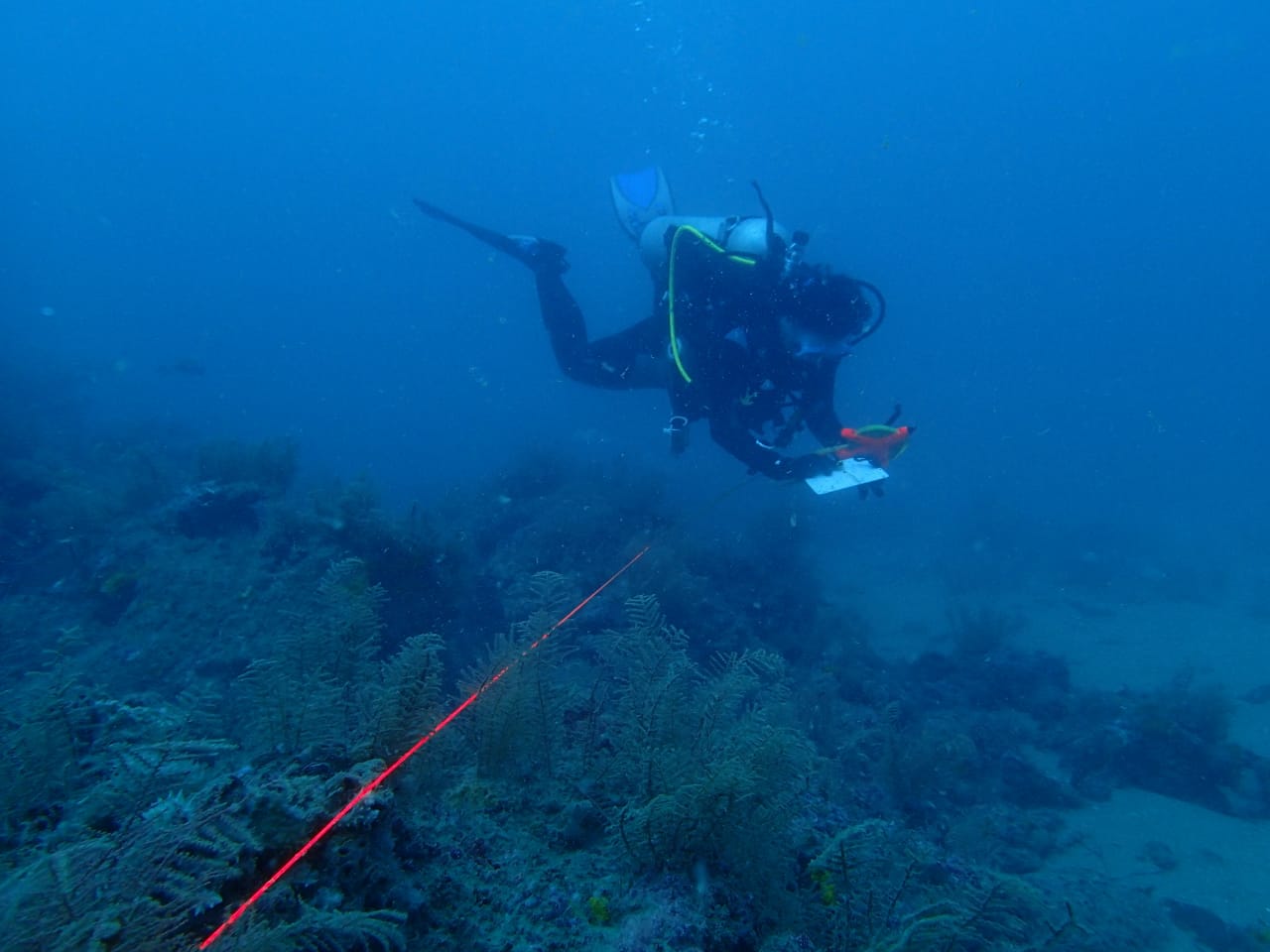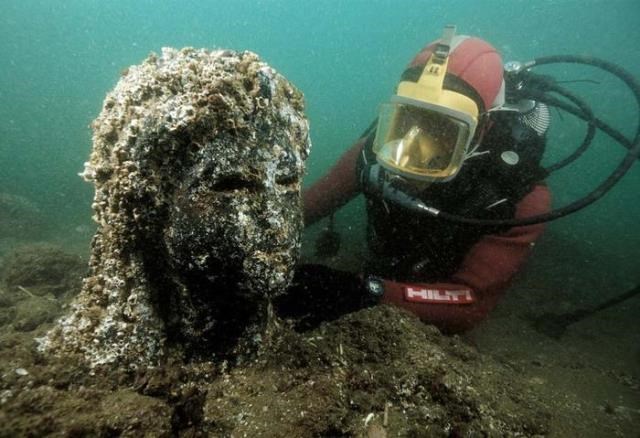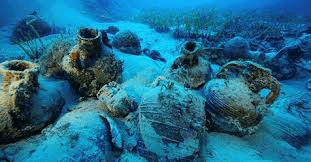Unveiling Maritime History: Secrets from the Deep Sea
Maritime history has always been a source of fascination for enthusiasts and scholars alike. The vast oceans and their depths hold countless stories of exploration, trade, and adventure. The deep sea, in particular, has been a treasure trove of historical secrets waiting to be uncovered. This article aims to delve into the lesser-known secrets from the deep sea that shed light on maritime history.
Table of Contents
The Ancient Shipwrecks
The deep sea holds a wealth of secrets, and one of the most intriguing aspects of maritime history lies in the ancient shipwrecks that have remained hidden for centuries at the bottom of the sea. These shipwrecks provide us with a window into the past, offering valuable insights into ancient maritime trade routes and technologies.
When we delve into the world of these ancient shipwrecks, we uncover a treasure trove of knowledge. These sunken vessels serve as time capsules, holding remnants of a bygone era when trade and exploration were the lifeblood of civilizations. By studying these shipwrecks, historians and archaeologists can piece together the puzzle of ancient maritime trade, uncovering the routes that connected different parts of the world and shedding light on the technologies and techniques used by ancient seafarers.
Two particularly famous shipwrecks that deserve mention are the Antikythera and Batavia. The Antikythera shipwreck, discovered in the early 1900s, is of immense historical significance. It yielded the world’s oldest-known analog computer, the Antikythera mechanism, which served as an astronomical calculator and navigational aid. The discovery of this advanced device revolutionized our understanding of ancient technology and navigation capabilities.
The Batavia shipwreck, on the other hand, represents a darker chapter in maritime history. It bears witness to a tragic tale of mutiny and murder, as the ship, carrying valuable cargo and passengers, sank off the coast of Australia in 1629. The shipwreck itself is a haunting reminder of the consequences of human greed and desperation.
These ancient shipwrecks and the artifacts they hold serve as invaluable pieces of our maritime history. They provide us with tangible evidence of the past and open doors to a world long forgotten. By exploring and studying these shipwrecks, we gain a deeper appreciation for the ingenuity of our ancestors and the rich tapestry of maritime history.
Hidden Treasures and Underwater Archaeology
Unveiling the secrets from the deep sea goes beyond the allure of ancient shipwrecks and lost civilizations. It also involves the uncovering of hidden treasures, which hold immense value in unraveling maritime history. Through underwater archaeology, a fascinating discipline that utilizes advanced techniques and technologies, experts are able to explore the depths of the ocean and recover artifacts that have been preserved for centuries.
The value in uncovering hidden treasures goes beyond their monetary worth. These treasures provide crucial insights into the past, shedding light on ancient societies, their trade routes, and their technological advancements. By examining these artifacts, historians can piece together the puzzle of maritime history, discovering lost techniques and forgotten customs.
Underwater archaeology is a meticulous and multi-faceted process. Experts employ a variety of techniques to recover artifacts from the deep sea, including remote sensing, diving, and robotic exploration. These methods allow them to navigate the challenging underwater environment and preserve the delicate nature of the findings. Through underwater excavation, researchers can carefully study the historical context of the artifacts, linking them to specific time periods and civilizations.
Some of the notable findings from underwater archaeological expeditions include precious metals such as gold, which not only provide a glimpse into ancient trade and economic systems but also showcase the craftsmanship and skill of past civilizations. Artifacts, ranging from pottery to jewelry to tools, have also been discovered, offering valuable clues about daily life, religious practices, and societal structures.
Each discovery in the deep sea adds another piece to the puzzle of maritime history. Whether it is a well-preserved shipwreck, a collection of ancient coins, or a long-lost artifact, these findings enrich our understanding of the past and inspire further exploration. Through the preservation and study of hidden treasures, we can ensure that the secrets from the deep sea continue to be unveiled, contributing to a comprehensive narrative of our maritime heritage.
In conclusion, uncovering hidden treasures from the deep sea through underwater archaeology is a vital endeavor. Not only do these treasures hold historical and cultural significance, but they also provide valuable insights into the maritime history that shapes our world today. By understanding the techniques used in underwater archaeology and exploring notable findings such as gold and artifacts, we can appreciate the immense value of maritime history and support ongoing efforts in research and preservation. Let us delve into this captivating world and promote conservation initiatives to protect our underwater heritage for generations to come.
Lost Civilizations and Sunken Cities
The allure of lost civilizations and sunken cities has long captivated the imaginations of explorers, historians, and archeologists alike. Sunken ancient cities like Atlantis and Alexandria continue to intrigue us with their mysteries and the potential knowledge they hold about our past. These submerged ruins represent fascinating windows into history, allowing us to glimpse the lives and cultures of forgotten civilizations.
Sunken ancient cities like Atlantis and Alexandria have been the subject of much speculation and debate. The legend of Atlantis, a prosperous and advanced civilization said to have disappeared beneath the sea in a single cataclysmic event, has intrigued thinkers for centuries. Meanwhile, Alexandria, once a cultural and intellectual hub of the ancient world, was gradually lost to the sea as a result of natural disasters and rising sea levels.
The exploration and study of these lost civilizations beneath the sea offer us a glimpse into the rich tapestry of human history. Ongoing underwater excavations and discoveries have shed light on the architecture, artifacts, and technology of these societies, providing a greater understanding of their cultural achievements and interactions with other civilizations. By examining the remains of these sunken cities, archeologists have pieced together a more complete picture of the ancient world.
Today, technological advancements in underwater archeology have enabled researchers to delve deeper into the secrets of these lost civilizations. Modern tools like sonar imaging and submersibles allow us to explore and document these underwater sites with greater precision and detail. As a result, new discoveries are constantly being made, uncovering more hidden remnants of these ancient cities and adding to our knowledge of the past.
In conclusion, the allure of lost civilizations and sunken cities lies in the profound historical significance they hold. By studying these submerged ruins, we gain a better understanding of the cultures, achievements, and interactions of ancient civilizations. Ongoing underwater excavations and discoveries continue to shed light on the secrets of these lost cities, providing invaluable insights into our shared history. It is through our continued support of research and archeological preservation efforts that we can ensure the preservation of these submerged wonders for future generations to explore and learn from.
Maritime Tragedies and Mysteries
Maritime history is not only filled with triumphs and discoveries; it is also marked by significant tragedies that have shaped the course of seafaring. Two of the most infamous maritime disasters are the sinking of the Titanic and the USS Indianapolis. The sinking of the Titanic in 1912 was a wakeup call for the maritime industry, showcasing the need for stricter safety regulations and emergency procedures. This tragic event led to the establishment of stricter maritime safety measures and the creation of organizations like the International Ice Patrol.
Similarly, the USS Indianapolis, sunk during World War II, remains one of the most tragic and mysterious incidents in maritime history. This ship was carrying crucial components for the atomic bomb when it was torpedoed and sunk by a Japanese submarine. Only a fraction of the crew survived, enduring days of exposure, shark attacks, and dehydration. The sinking of the USS Indianapolis brought attention to the importance of effective rescue operations and communication systems during times of conflict.
Alongside these significant tragedies, the maritime world is also riddled with unsolved mysteries. One such mystery is the disappearance of Flight 19 in the Bermuda Triangle. In 1945, five U.S. Navy aircraft vanished during a routine training flight in this infamous area. Despite extensive search efforts, no wreckage or survivors were ever found. This incident, along with other unexplained disappearances, has led to countless theories and speculation about the Bermuda Triangle and its potential dangers.
These maritime tragedies and mysteries are not just dramatic events buried in history but have had a lasting impact on maritime safety regulations and our understanding of the unknown. They serve as reminders of the dangers that lurk beneath the waves and the need for constant vigilance in maritime operations. By studying these incidents and exploring the surrounding mysteries, we can continue to improve safety measures, learn from past mistakes, and ensure a safer future for all who venture into the deep sea.
In conclusion, maritime history is not only a treasure trove of captivating stories and hidden secrets; it is also a realm marked by tragedies and mysteries. The sinking of the Titanic, the USS Indianapolis, and the enigmatic disappearance of Flight 19 are just a few examples that highlight the importance of maritime safety regulations and ongoing research. By delving into these stories, we not only honor the lives lost but also contribute to the preservation of maritime history. It is crucial that we continue to explore, study, and learn from these tragic events and unsolved mysteries, as they hold valuable lessons for the maritime industry and inspire us to push the boundaries of our understanding of the deep sea.
Underwater World and Marine Life
Deep beneath the surface of the sea lies a mesmerizing world teeming with diverse marine life. From colorful coral reefs to mysterious sea creatures, the deep sea holds endless wonders waiting to be discovered. Exploring this underwater world not only captivates our imagination but also serves as a valuable resource for studying and understanding marine ecosystems.
The importance of uncovering maritime history in relation to marine life cannot be underestimated. By delving into the secrets of the deep sea, scientists can gain insights into the historical and ecological context of marine life. From ancient shipwrecks to lost civilizations, these underwater finds contribute to a better understanding of marine ecosystems and their evolution over time.
Furthermore, the study of underwater marine life is crucial for conservation efforts. By understanding the natural habitats and behavior of marine animals, researchers can develop effective strategies to protect and preserve these fragile ecosystems. Uncovering maritime history enables us to make informed decisions about sustainable practices and the protection of marine biodiversity.
However, the impact of human activities on the underwater world cannot be ignored. Pollution, overfishing, and climate change are just some of the threats that marine life faces today. By revealing the secrets of the deep sea and shedding light on maritime history, we become more aware of the consequences of our actions on these delicate ecosystems. This knowledge pushes us to take responsibility and make positive changes to ensure the long-term survival of marine life.
In conclusion, the underwater world and marine life hold a wealth of information that can be unlocked through the exploration of maritime history. Understanding the historical context of marine ecosystems deepens our appreciation for their diversity and beauty. Moreover, it serves as a reminder of the need to protect and preserve these delicate ecosystems for future generations. Let us delve into the fascinating world of maritime history, support conservation initiatives, and strive for a sustainable future for the underwater world and its precious marine life.
Conclusion
In conclusion, the exploration of maritime history has been greatly enhanced by the secrets uncovered from the deep sea. Throughout this article, we have delved into the ancient shipwrecks that lie at the bottom of the sea, revealing valuable insights into ancient maritime trade routes and technologies. These shipwrecks, such as the Antikythera and Batavia, hold immense historical significance and continue to captivate the imagination.
Furthermore, the value of uncovering hidden treasures from the deep sea cannot be overstated. Through underwater archaeology, researchers have utilized various techniques to bring precious artifacts, like gold and ancient relics, to the surface. These findings offer a glimpse into the past, shedding light on the historical context in which they were created.
Lost civilizations and sunken cities are another fascinating aspect of maritime history that the deep sea has unveiled. Ancient cities like Atlantis and Alexandria, submerged beneath the waves, hold the potential for immense historical significance. Ongoing underwater excavations and discoveries contribute to our understanding of these lost civilizations and offer a glimpse into their once-thriving societies.
Maritime tragedies, such as the Titanic and the USS Indianapolis, have left an indelible mark on our collective memory and shaped maritime history and safety regulations. These tragedies serve as reminders of the risks involved in maritime exploration and highlight the importance of ongoing research and preservation efforts to enhance safety measures and prevent future incidents.
Lastly, the deep sea is a flourishing ecosystem, home to diverse marine life. By exploring maritime history, we not only gain insights into the past but also understand the impact of human activities on the underwater world. Preservation and conservation efforts become imperative in order to safeguard the delicate balance of marine ecosystems and protect the treasures hidden beneath the sea.
In conclusion, the secrets of the deep sea play a pivotal role in unveiling maritime history. As readers, let us delve into this fascinating world and support ongoing research and preservation initiatives. By doing so, we can contribute to the understanding and conservation of our maritime heritage for future generations to appreciate and learn from.







